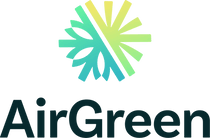Changing the way you heat and cool your home in Montréal: a smart move for comfort and savings
In Montréal, Laval, Longueuil, on the North Shore and the South Shore, more and more homeowners are rethinking how they heat their homes. With Hydro-Québec rates on the rise and growing environmental concerns, it's become crucial to compare the most common systems: electric baseboards and the multi-zone heat pump. At AirGreen, we’ve helped hundreds of families make the switch to better energy efficiency. In this article, we dive deep into a comparison of these two technologies, based on our field experience, recent installations, and real customer questions.
Understanding the key difference between electric baseboards and a multi-zone heat pump
Electric baseboards are widespread in homes built in Québec before the 2000s. Easy to install and inexpensive to purchase, they’re also highly energy-consuming. Their principle is simple: turn electricity directly into heat. The result? High energy usage for often uneven comfort.
The multi-zone heat pump, on the other hand, works on a completely different principle: it captures heat from the outdoor air and transfers it indoors (or cools when needed). With an outdoor compressor and multiple indoor wall-mounted or ceiling units, it allows you to control the temperature independently in each zone or room, all while drastically reducing your electricity use.
Benefits of a multi-zone heat pump based on our recent installations
At AirGreen, we’ve installed multi-zone systems from brands like Gree, Fujitsu, Tosot, and Mitsubishi in principal residences, duplexes, and even commercial spaces across Montréal and beyond. Here are the real benefits we’ve seen:
1. Immediate reduction in electricity bills
One of our clients in Saint-Bruno-de-Montarville, who had been heating solely with baseboards, saw their winter bill drop from $480/month to $220 after installing a Fujitsu 36,000 BTU multi-zone heat pump with three separate zones. Thanks to its high Coefficient of Performance (COP) and Inverter technology, this unit uses up to 60% less energy than baseboards to heat the same area.
2. Even thermal comfort in every room
Unlike baseboards, which often create hot and cold zones, a heat pump lets you maintain a consistent and comfortable temperature throughout your home. In Laval, a family we recently equipped with a Gree MultiZone heat pump with 4 wall-mounted units especially appreciated being able to adjust the temperature in each bedroom to suit individual preferences.
3. Built-in air conditioning without extra cost
An electric baseboard heats… and that’s it. The multi-zone heat pump provides both heating AND cooling, which is essential with Québec’s increasingly hot summers. In Pointe-Claire, one client told us her new Gree unit “literally saved” her during the July heatwave—while using three times less electricity than a traditional portable AC.
The drawbacks of electric baseboards: what you should know
1. An inherently energy-intensive system
Baseboards convert 100% of consumed electricity into heat… but without any recovery or efficiency optimization. Over the course of a year, this means some of the highest heating costs for residential properties, especially if the home is not perfectly insulated.
2. No cooling functionality
During heatwaves, you’ll need additional equipment (fans, portable ACs, window units), which drives up your power bill and complicates your home layout.
3. Limited control over thermal comfort
Even with smart thermostats, baseboards can’t deliver precise room-by-room or zone-by-zone temperature control. That leads to temperature swings and noticeable discomfort—especially in larger or multi-storey homes.
A smart investment: why the multi-zone heat pump wins long-term
Available grants and incentives
Thanks to Hydro-Québec’s LogisVert program, the Federal Greener Homes Grant, and other local incentives, many of our clients have received between $1,500 and $5,000 in grants for their projects. These programs make heat pumps even more accessible—especially since we handle the entire grant process for you.
Longer lifespan
A properly maintained heat pump can last 12 to 18 years. At AirGreen, we offer comprehensive HVAC maintenance plans to ensure your system performs year after year. In Repentigny, we’ve been servicing a Gree multi-zone system since 2015 in a single-family home, and it still works today just like it did on day one.
Increased property value
Homes with modern heating and cooling systems sell faster and for higher prices. In several recent real estate transactions on the South Shore, having a multi-zone heat pump was a key selling point for the buyer.
Why choose AirGreen for your conversion project
At AirGreen, we don’t just install multi-zone heat pumps. We guide each customer from the initial diagnosis through to post-installation maintenance. Our certified teams understand the architectural specifics of Québec homes—whether it’s old Montréal triplexes, Laval bungalows, or modern condos in Longueuil.
We customize each project based on:
-
the exact size and layout of the home,
-
the configuration of the rooms,
-
your heating and cooling needs,
-
your aesthetic and noise preferences (especially for ultra-quiet models),
-
and your eligibility for available grants.
Practical tips before replacing your electric baseboards
-
Evaluate your home’s insulation: a quality heat pump works even better in a well-insulated house.
-
Choose a certified, experienced installer: AirGreen is RBQ-accredited, a member of the CMMTQ, and an official partner of top-tier brands.
-
Request a full quote including grants: we provide detailed ROI simulations and full support in applying for all available government incentives.
Conclusion: a transformation that just makes sense
Switching from electric baseboards to a multi-zone heat pump isn’t just a financial decision—it’s a concrete step toward better comfort, better health, and a better planet. In Montréal, Laval, Longueuil, on the North Shore and South Shore, we see families every day saving money while improving their quality of life. Be like them: contact AirGreen to discover how to transform your home—and your bill—with a smart, sustainable solution.

